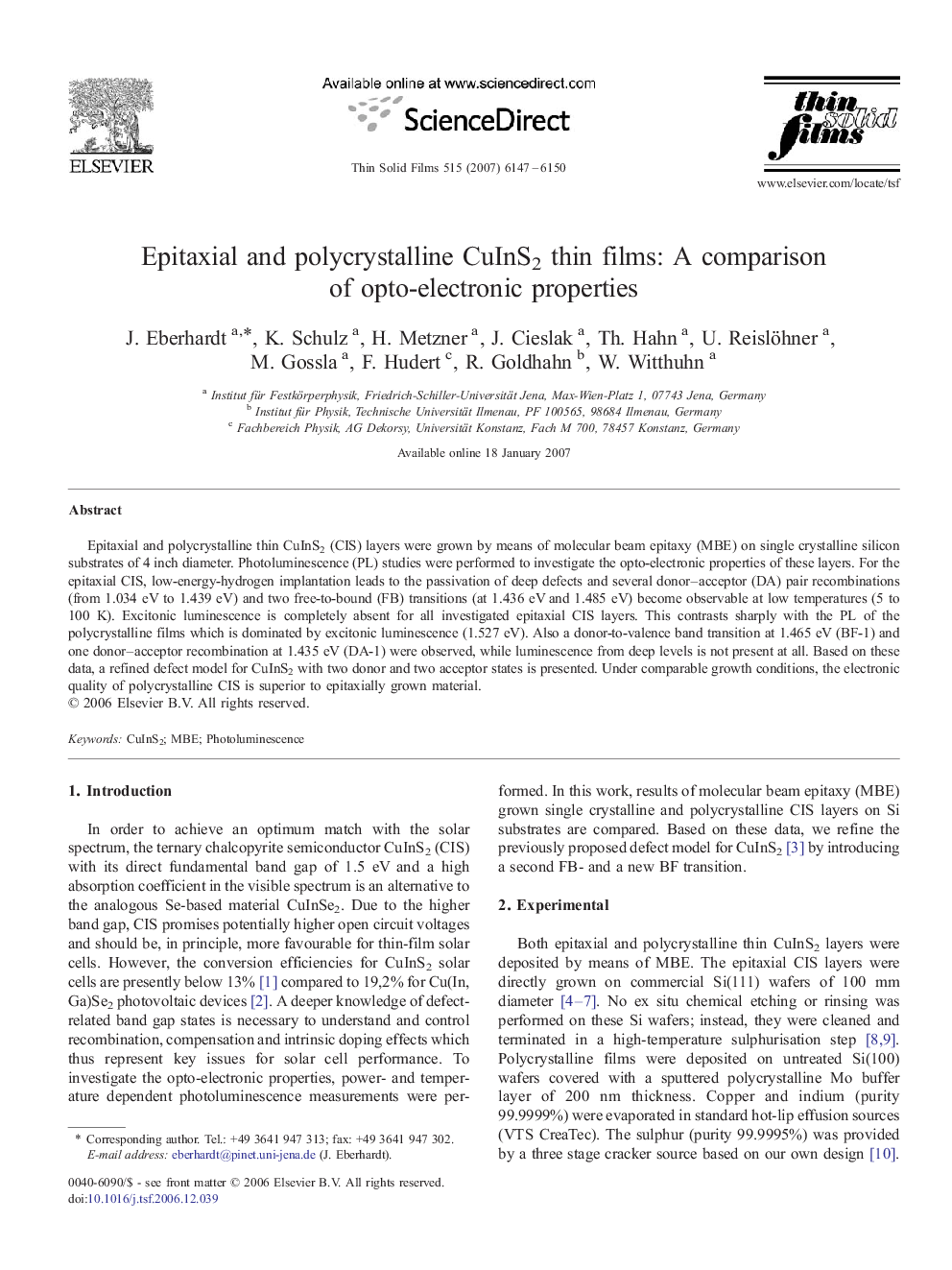| Article ID | Journal | Published Year | Pages | File Type |
|---|---|---|---|---|
| 1675895 | Thin Solid Films | 2007 | 4 Pages |
Epitaxial and polycrystalline thin CuInS2 (CIS) layers were grown by means of molecular beam epitaxy (MBE) on single crystalline silicon substrates of 4 inch diameter. Photoluminescence (PL) studies were performed to investigate the opto-electronic properties of these layers. For the epitaxial CIS, low-energy-hydrogen implantation leads to the passivation of deep defects and several donor–acceptor (DA) pair recombinations (from 1.034 eV to 1.439 eV) and two free-to-bound (FB) transitions (at 1.436 eV and 1.485 eV) become observable at low temperatures (5 to 100 K). Excitonic luminescence is completely absent for all investigated epitaxial CIS layers. This contrasts sharply with the PL of the polycrystalline films which is dominated by excitonic luminescence (1.527 eV). Also a donor-to-valence band transition at 1.465 eV (BF-1) and one donor–acceptor recombination at 1.435 eV (DA-1) were observed, while luminescence from deep levels is not present at all. Based on these data, a refined defect model for CuInS2 with two donor and two acceptor states is presented. Under comparable growth conditions, the electronic quality of polycrystalline CIS is superior to epitaxially grown material.
